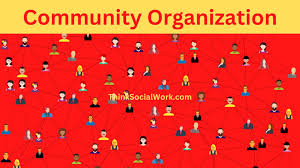Artistic Activism: Inspiring Change Through Creativity
Artistic activism is a powerful form of expression that merges art and activism to create social or political change. It harnesses the creative energy of artists to raise awareness, provoke thought, and inspire action on important issues facing society today.
The Power of Art in Activism
Art has a unique ability to transcend language barriers and connect with people on an emotional level. Through visual arts, music, theater, dance, and other creative mediums, artistic activists can convey complex messages in a way that resonates with audiences and prompts them to reflect on pressing societal issues.
Examples of Artistic Activism
From powerful murals depicting social injustices to thought-provoking performance art pieces challenging the status quo, artistic activism takes many forms. Artists around the world use their talents to advocate for human rights, environmental sustainability, racial equality, gender justice, and more.
Musical Activism
Music has long been a tool for social change. Artists like Bob Dylan, Nina Simone, and Bob Marley have used their songs to protest against war, racism, and inequality. Today, musicians continue this tradition by creating anthems that inspire unity and solidarity among diverse communities.
Street Art as Activism
Street art serves as a visual reminder of societal issues that might be overlooked. Graffiti artists transform urban spaces into canvases for political commentary, shedding light on topics such as poverty, corruption, and human rights violations. Their work sparks conversations and challenges viewers to confront uncomfortable truths.
The Impact of Artistic Activism
Artistic activism has the power to ignite social movements and drive meaningful change. By engaging people through creativity and imagination, artists can shift perspectives, mobilize communities, and influence policymakers to address systemic injustices. Through their artistry, they amplify voices that may otherwise go unheard.
In Conclusion
Artistic activism is a dynamic force for positive transformation in society. By blending artistry with advocacy, artists can spark dialogue, promote empathy, and foster solidarity among individuals committed to building a more just and equitable world. As we celebrate the intersection of art and activism, let us recognize the enduring impact of creative expression in shaping our shared future.
Understanding Artistic Activism: 8 Frequently Asked Questions
- What is creative activism?
- What is the power of artistic activism?
- What is an artist activist?
- Why is artistic activism important?
- How to be an art activist?
- What is artistic activism?
- What is an example of art activism?
- What is an example of creative activism?
What is creative activism?
Creative activism, also known as artistic activism, is a form of advocacy that utilizes creative expression and artistic mediums to address social and political issues. It involves using art, such as visual arts, music, performance, and literature, as a tool for raising awareness, inspiring change, and mobilizing communities. Creative activism goes beyond traditional forms of protest by harnessing the power of imagination and emotion to engage audiences in meaningful dialogue and action. By blending creativity with activism, practitioners of creative activism aim to challenge norms, provoke thought, and promote social justice in innovative ways that resonate with individuals on a deeper level.
What is the power of artistic activism?
The power of artistic activism lies in its ability to transcend traditional boundaries and engage audiences on a profound emotional level. Through the fusion of art and activism, this dynamic form of expression has the capacity to spark dialogue, challenge perspectives, and inspire meaningful social change. By harnessing the creative energy of artists, artistic activism amplifies marginalized voices, sheds light on pressing societal issues, and mobilizes communities toward collective action. Its impact resonates far beyond words alone, as it utilizes the universal language of art to evoke empathy, provoke thought, and cultivate a shared sense of purpose in addressing systemic injustices.
What is an artist activist?
An artist activist, often referred to as a cultural or creative activist, is an individual who uses their artistic talents and platform to advocate for social or political change. Artist activists employ various forms of art, such as visual arts, music, performance, and literature, to address pressing issues in society and provoke critical dialogue. They leverage their creativity to raise awareness, challenge norms, inspire action, and amplify marginalized voices. By blending artistry with activism, artist activists play a crucial role in advancing social justice causes and fostering a more inclusive and equitable world through their expressive and impactful work.
Why is artistic activism important?
Artistic activism is important because it serves as a catalyst for social change by engaging people in a way that traditional forms of activism may not. Through creative expression, artistic activists can communicate complex issues, evoke emotions, and inspire action in a manner that resonates deeply with individuals across diverse backgrounds. Art has the power to transcend language barriers and ignite empathy, fostering connections between communities and amplifying marginalized voices. By merging art with activism, artists can shine a spotlight on pressing societal issues, challenge the status quo, and ultimately drive meaningful progress towards a more equitable and just world.
How to be an art activist?
To become an art activist, individuals can start by exploring their passion for art and identifying social or political issues that resonate with them. By leveraging their creative talents, artists can use various mediums such as visual arts, music, performance, or street art to raise awareness and advocate for change. Engaging with local communities, collaborating with like-minded individuals or organizations, and participating in relevant events or exhibitions are effective ways to amplify the impact of artistic activism. By staying informed about current events and continuously honing their craft, aspiring art activists can make a meaningful contribution to addressing pressing societal challenges through their art.
What is artistic activism?
Artistic activism is a dynamic and innovative approach to advocacy that merges the power of art with the principles of social change. It involves using creative expression, such as visual arts, music, theater, or dance, to raise awareness, challenge norms, and inspire action on pressing societal issues. By harnessing the emotive and transformative qualities of art, artistic activism engages audiences in meaningful dialogue and prompts them to reconsider their perspectives on complex topics like human rights, environmental sustainability, and social justice. This form of activism transcends traditional methods by leveraging the universal language of art to spark conversations, drive community engagement, and ultimately catalyze positive change in the world.
What is an example of art activism?
An exemplary instance of art activism is the “Guerrilla Girls,” a group of feminist artists who use provocative posters, performances, and public interventions to challenge gender inequality and discrimination in the art world. By adopting pseudonyms and wearing gorilla masks to conceal their identities, the Guerrilla Girls draw attention to issues such as lack of representation of women and artists of color in museums and galleries. Through their bold and satirical artworks, they spark conversations, raise awareness, and advocate for greater diversity and inclusivity in the realm of contemporary art.
What is an example of creative activism?
An example of creative activism is the “Fearless Girl” statue installed in New York City’s Financial District. Created by artist Kristen Visbal, this powerful sculpture depicts a young girl defiantly facing the iconic Charging Bull statue. The Fearless Girl represents female empowerment and challenges gender inequality in the corporate world. This thought-provoking artwork sparked conversations about gender diversity and prompted discussions on the need for more women in leadership roles. Through its visual impact and symbolic message, the Fearless Girl statue serves as a prime example of how art can be used to advocate for social change and inspire action.




